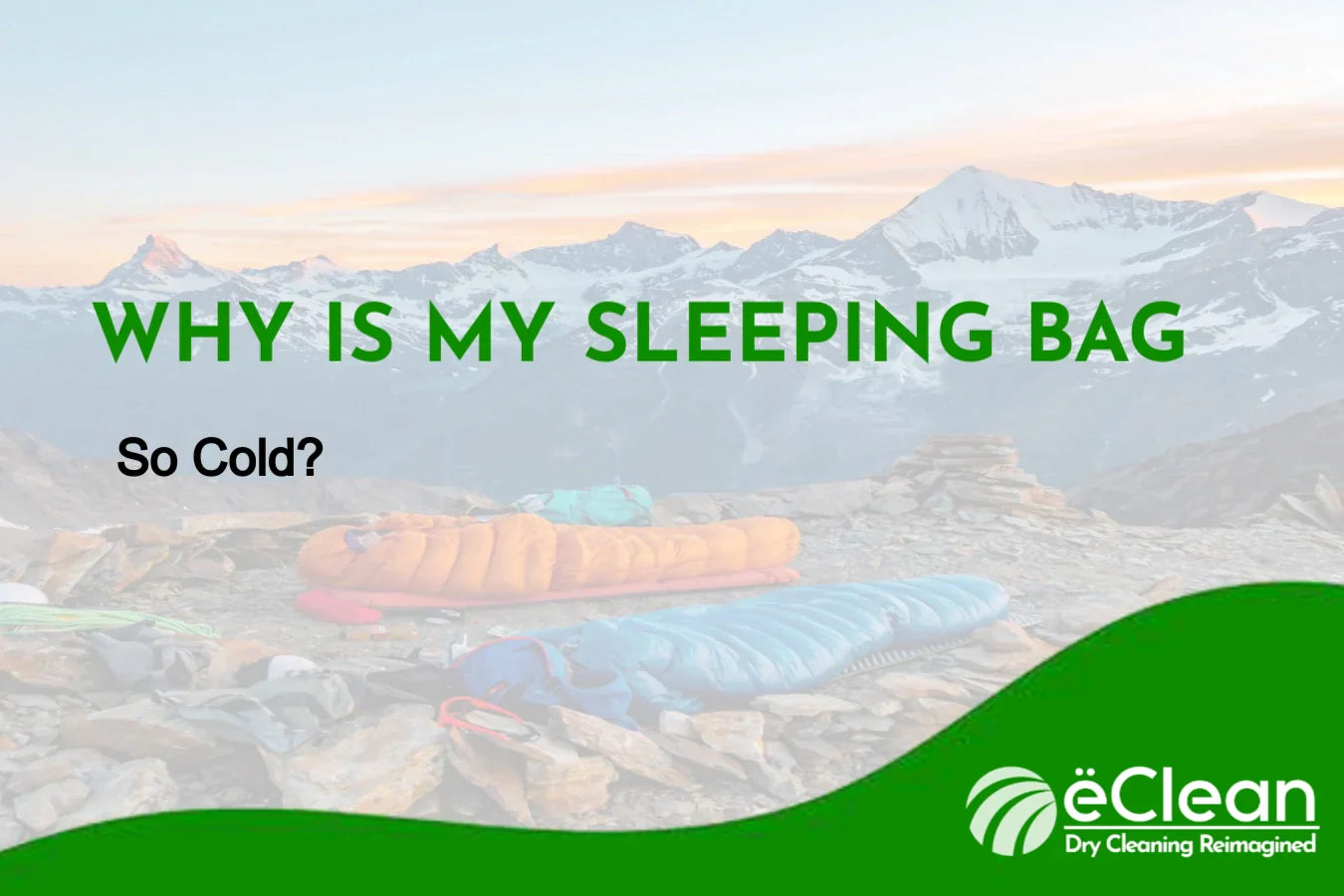Your Cart is Empty

A good sleeping bag is necessary for outdoor activities like camping, climbing, or trekking in the wilderness or mountains. But with so many types of bags available, how do you know which one to choose? In this article, we'll compare down and synthetic sleeping bags to help you choose the better one for your needs.

A down sleeping bag is filled with the soft, fluffy under feathers of ducks or geese. These feathers are known for their excellent insulating properties, making these bags ideal for cold weather camping. They are also lightweight, compressible, and durable, which makes them a favorite among backpackers and outdoor enthusiasts.
Cleaning a down sleeping bag is important to maintain its insulation, even though it can be challenging. Most companies recommend hand washing or dry cleaning only. However, hand washing is extremely time consuming, difficult, and can leave mold or mildew or even damage the insulation.
The best way to clean your down sleeping bag is through CO2 dry cleaning. This technique was patented byeClean Advanced Fabricare. Instead of using harmful chemicals or water, it uses liquid CO2 to clean fibers.
This ensures that nothing gets damaged and the insulation remains intact. eClean offers gentle sleeping bag cleaning services to ensure your bag is well cared for and fabric is protected.

Synthetic sleeping bags use man-made fibers, such as polyester or nylon, to create insulation. They are a more affordable option than down sleeping bags and perform well in damp conditions. Plus, they are hypoallergenic, which makes them a good choice for individuals with allergies.
Synthetic sleeping bags are generally easier to clean than down sleeping bags. Some companies claim they can be washed in a washing machine or by hand using mild detergent.
Home washing machines can still cause damage, while industrial washing machines in laundromats can flatten insulation and weaken fibers. To make your sleeping bag last longer, choose CO2 dry cleaning to protect the fabric and keep it looking new.

When it comes to choosing between the two options, it really depends on your needs. There are many reasons to use a down sleeping bag vs a synthetic sleeping bag and vice versa.
For example, if you're camping in cold weather conditions, down sleeping bags are the clear winner. They are warmer and pack down smaller than synthetic sleeping bags, making them ideal for backpacking trips. Plus, they are more durable when cared for correctly and lightweight!
However, if you're camping in damp conditions, synthetic sleeping bags may be a better option. In addition, if you have allergies or want to save money for camping trips, this could be the right choice for you.
Besides these two types of sleeping bags, you have other options that may be more geared towards specific needs or activities. A cold-weather sleeping bag, for instance, is thicker and made to keep you warm in below-freezing temperatures.
Keep an emergency sleeping bag in your car or backpack for unexpected situations during outdoor activities. It can save lives. Military sleeping bags and mummy sleeping bags offer more protection and insulation. Finally, a sleeping bag suit can provide all-over protection from the cold.
Cleaning your sleeping bag is essential, no matter which type you choose. A silk sleeping bag liner can help in protecting your sleeping bag. But when it comes to cleaning, opt for CO2 dry cleaning to get the best results. eClean offerssleeping bag cleaning services for any type of sleeping bag or liner for a reasonable cost.
No matter which bag you pick, make sure to care for it and choose a cleaning method that keeps it insulated. By following care instructions, you'll have a reliable camping companion for years.

Has your trusty sleeping bag started to get a little too cold for mountain & winter use, or are you just noticing that it's not feeling the same as it did when it was new? It's a frustrating experience that can leave you longing for a good night's sleep.
In this article, we dive into the reasons behind insulation loss in sleeping bags, specifically focusing on down-filled ones. We'll explore the science behind the properties of down, the impact of washing machines, and common causes for reduced insulation.